'Let nothing perish'
Charles Wade and Snowshill Manor
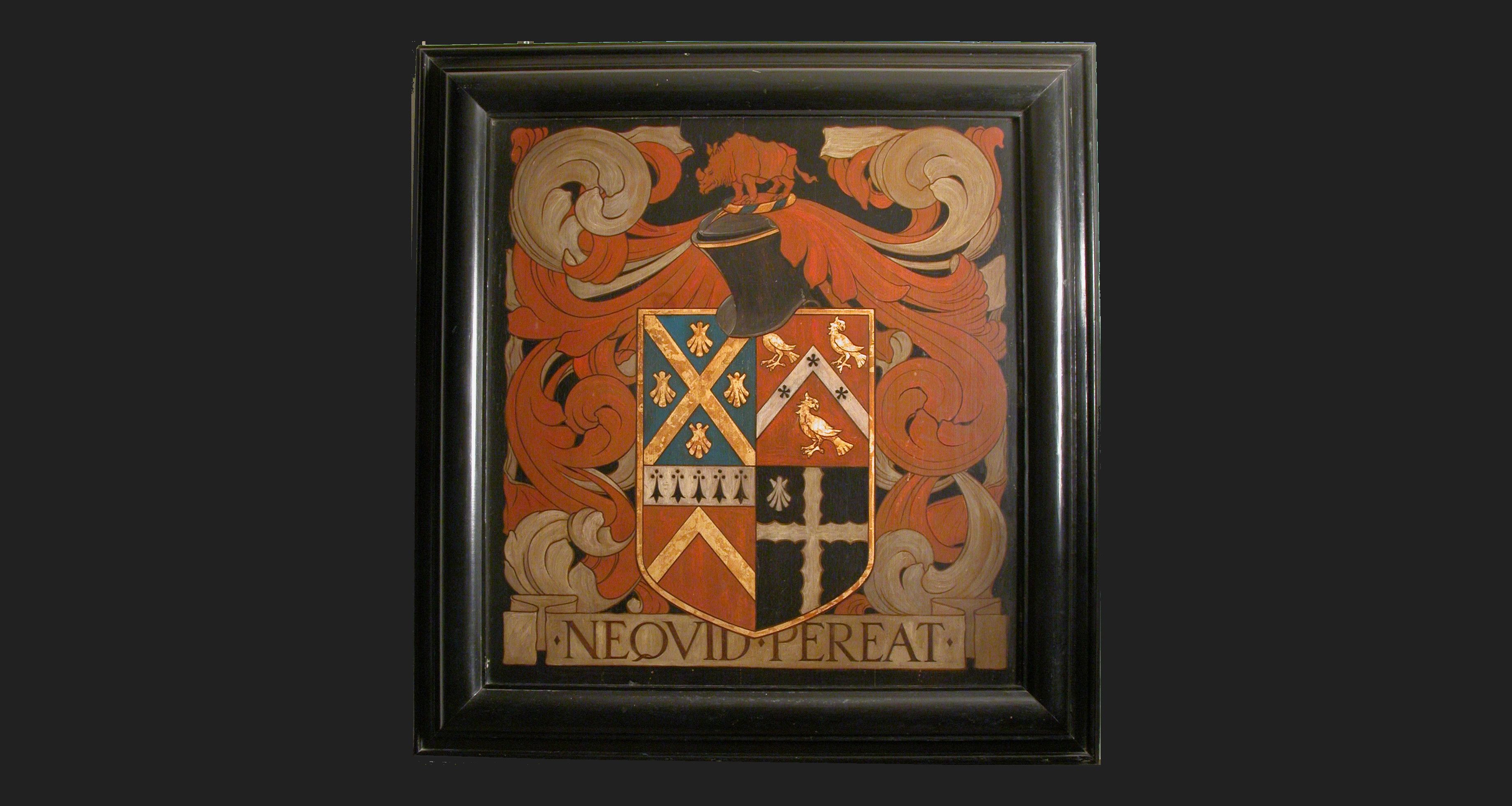
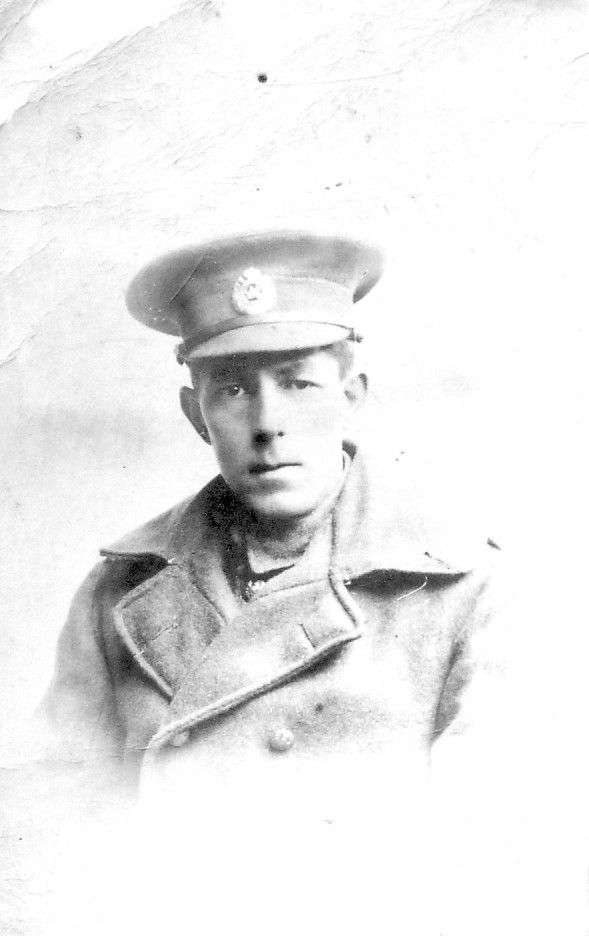
Charles Wade in the uniform of a Sapper in the Royal Engineers taken just before departure to France in 1917. © National Trust / Claire Reeves & team
Charles Wade in the uniform of a Sapper in the Royal Engineers taken just before departure to France in 1917. © National Trust / Claire Reeves & team
In 1918 Sapper Charles Paget Wade (1883-1956) was sitting in a canteen on the Western Front, planning ahead to a more peaceful time in England.
Before the War he trained as an architect before giving the profession away to concentrate on establishing himself as an artist and illustrator. Through his life he was a voracious collector of craftsmanship. With the personal motto, 'Let nothing perish', he preserved and championed the skill, beauty and stories held in individual handcrafted objects. His collection already included carriages and sedan chairs, spinning wheels, architectural salvage, furniture, historic costume, clocks and musical instruments. With it already outgrowing a rented room in London and mother's home, he was now leafing through a property supplement from a 1916 edition of a Country Life magazine on the lookout for a large house of his own.
Something caught his eye...
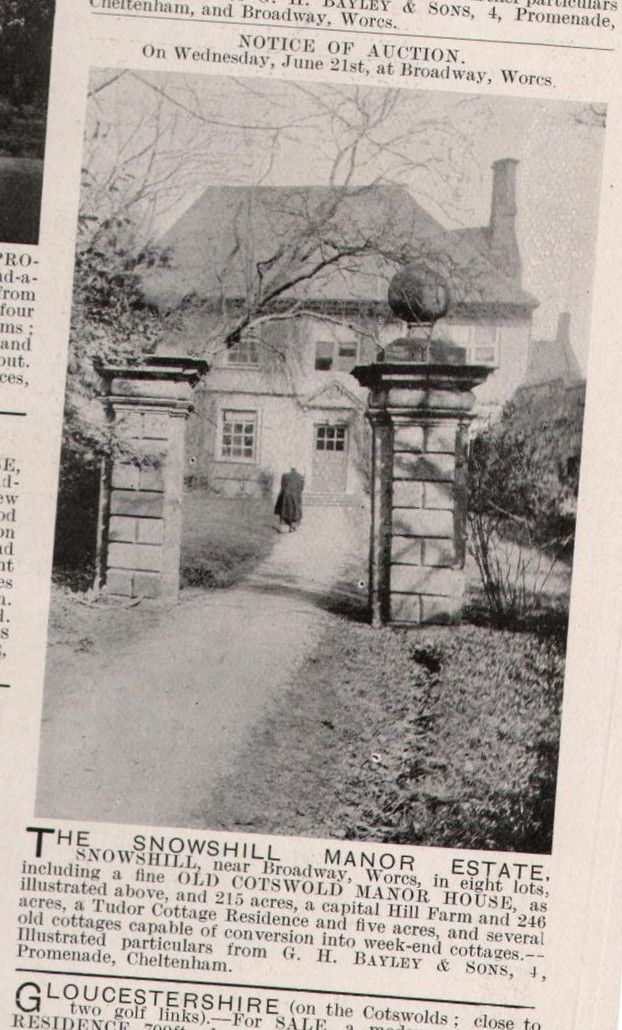
Supplement to Country Life, 17th June 1916.
Supplement to Country Life, 17th June 1916.
...a photograph of an ‘old Cotswold Manor House’ in the village of Snowshill in a corner of Gloucestershire. Though it might have already sold, he determined, if he survived the war, to seek it out.
In 1918 Sapper Charles Paget Wade (1883-1956) was sitting in a canteen on the Western Front, planning ahead to a more peaceful time in England.

Charles Wade in the uniform of a Sapper in the Royal Engineers taken just before departure to France in 1917. © National Trust / Claire Reeves & team.
Charles Wade in the uniform of a Sapper in the Royal Engineers taken just before departure to France in 1917. © National Trust / Claire Reeves & team.
Before the War he trained as an architect before giving the profession away to concentrate on establishing himself as an artist and illustrator. Through his life he was a voracious collector of craftsmanship. With the personal motto, 'Let nothing perish', he preserved and championed the skill, beauty and stories held in individual handcrafted objects. His collection already included carriages and sedan chairs, spinning wheels, architectural salvage, furniture, historic costume, clocks and musical instruments. With it already outgrowing a rented room in London and mother's home, he was now leafing through a property supplement from a 1916 edition of a Country Life magazine on the lookout for a large house of his own.
Something caught his eye...

Supplement to Country Life, 17th June 1916.
Supplement to Country Life, 17th June 1916.
...a photograph of an ‘old Cotswold Manor House’ in the village of Snowshill in a corner of Gloucestershire. Though it might have already sold, he determined, if he survived the war, to seek it out.
When he returned from the War he found the Manor House still available, and made a visit. 'The property was in a most deplorable state of ruin and neglect, but had not been spoiled with modern additions. In spite of the gloom of the day and the desolation', as a trained architect he 'could visualise it as a delightful home' and bought it. His approach to the repair, restoration and alteration was ‘always be very loath to destroy, save whenever possible, even at extra cost, extra trouble’.
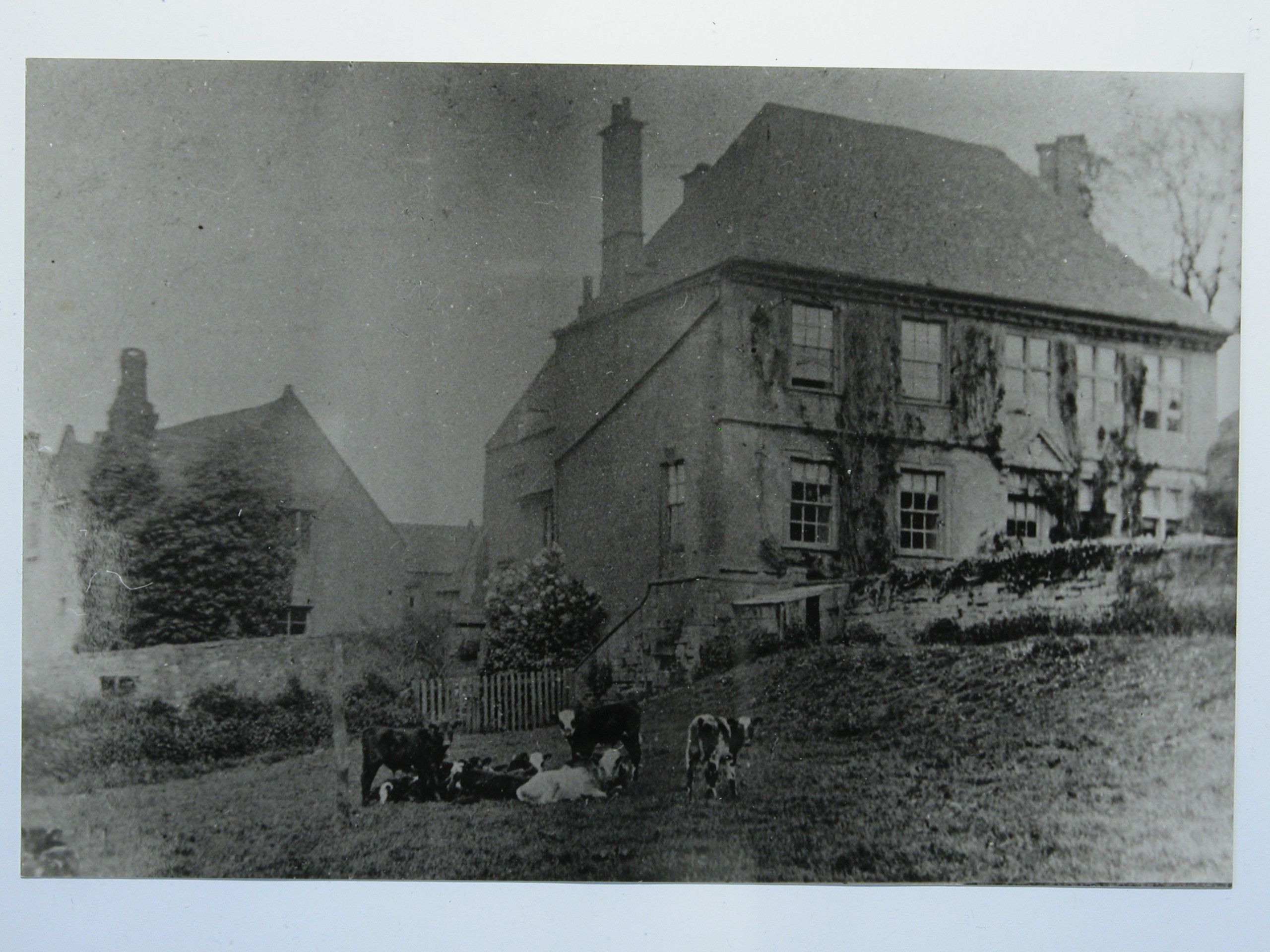
Black and white landscape photograph, printed on plain paper, no borders, of the front of the manor house, cows grazing down the bank beside the front garden wall. On reverse, handwritten in pencil 'Copy of A de la M's copy of Mr. Meadows photograph SW view of Snowshill Manor before restoration c1910. © National Trust / Claire Reeves & team.
Black and white landscape photograph, printed on plain paper, no borders, of the front of the manor house, cows grazing down the bank beside the front garden wall. On reverse, handwritten in pencil 'Copy of A de la M's copy of Mr. Meadows photograph SW view of Snowshill Manor before restoration c1910. © National Trust / Claire Reeves & team.
Charles lived in the Priest's House, next to Manor House.

Charles lived in the Priest's House next to Manor House.
He never lived in the Manor House, instead using it as an expressive architectural backdrop for his collection to provoke dramatic responses in visitors. Here, cast in shadow, they would see boneshakers, mangles and serpents. Modelled in half-light were Balinese masks, Armada chests and a Noah’s Ark. In the heavens, cherubs, flying foxes and model ships were in suspense. Time was given many faces in the Manor House, and finishes abounded in gold, vermilion and ancient grained woods.
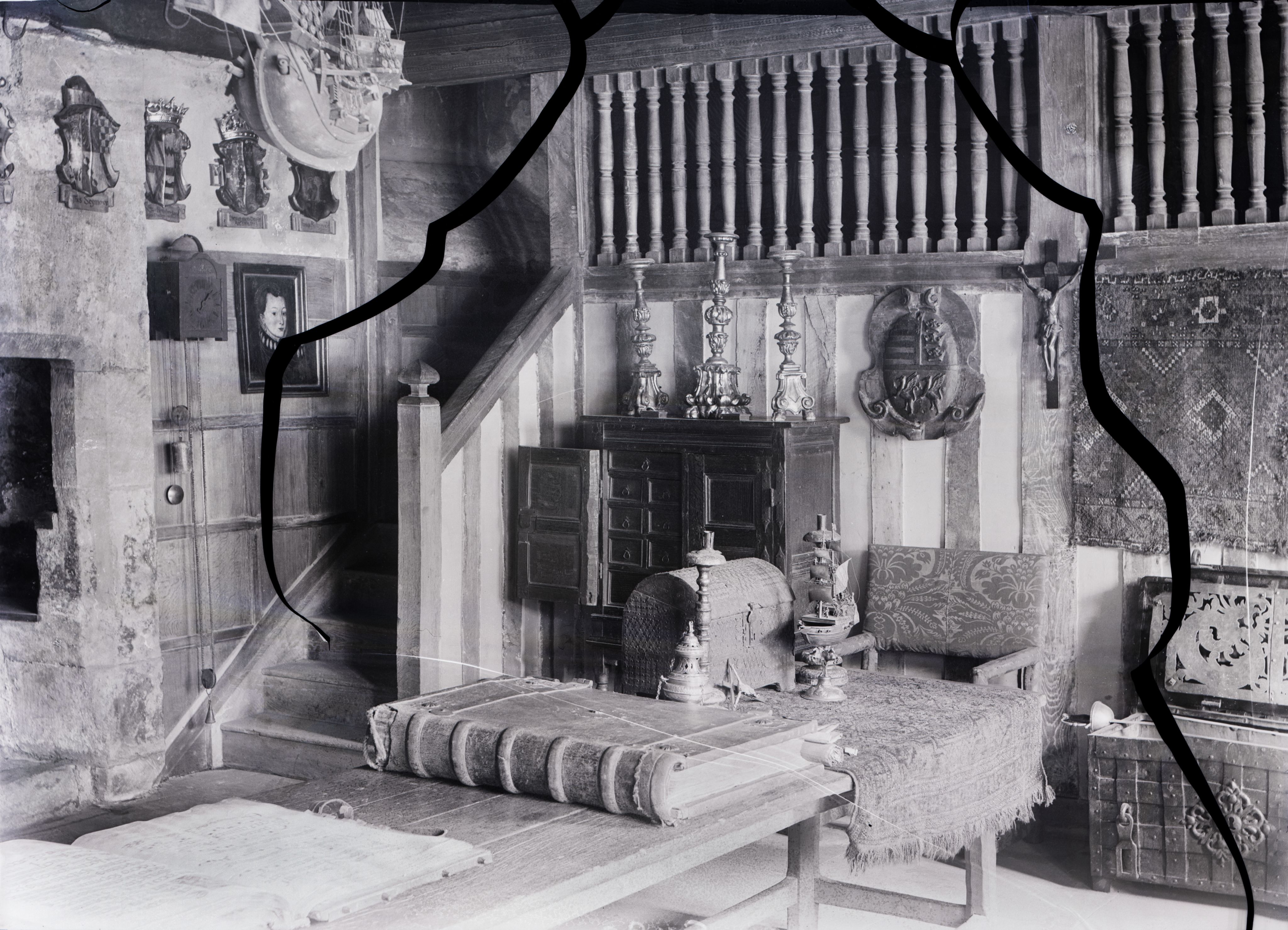
Glass photographic negative plate. Depicting the Dining Room (Dragon) Gallery (Salamander) at Snowshill Manor in 1925. Original glass plate envelope present. Badly damaged. © National Trust / Sarah Allen.
Glass photographic negative plate. Depicting the Dining Room (Dragon) Gallery (Salamander) at Snowshill Manor in 1925. Original glass plate envelope present. Badly damaged. © National Trust / Sarah Allen.
He had started collecting examples of English craftsmanship, but was soon drawn to the Continent, the Middle East and Asia. He bought his first of many suits of Samurai armour in 1903.
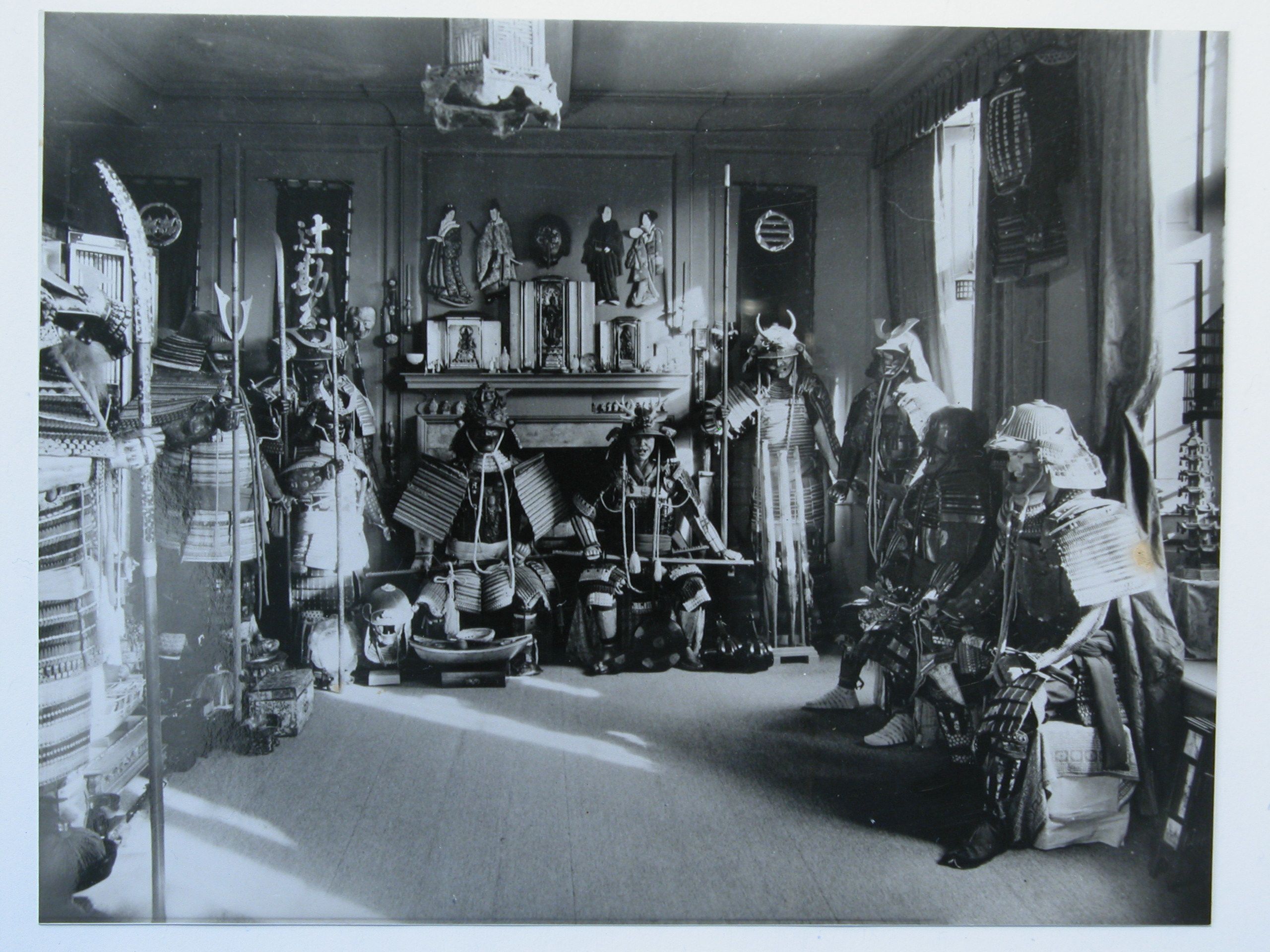
Black and white photograph of Samurai in Green Room at Snowshill Manor. © National Trust / Claire Reeves & team.
Black and white photograph of Samurai in Green Room at Snowshill Manor. © National Trust / Claire Reeves & team.
With help initially from prominent architect Mackay Hugh Baillie Scott (1865-1945) he transformed the 'treacherous swampy morass' of a farmyard into an Arts and Crafts garden. He converted a cow byre into a baronial hall, constructed terraces, sunken pools, stone walls, gateways and avenues to form a series of outdoor rooms.
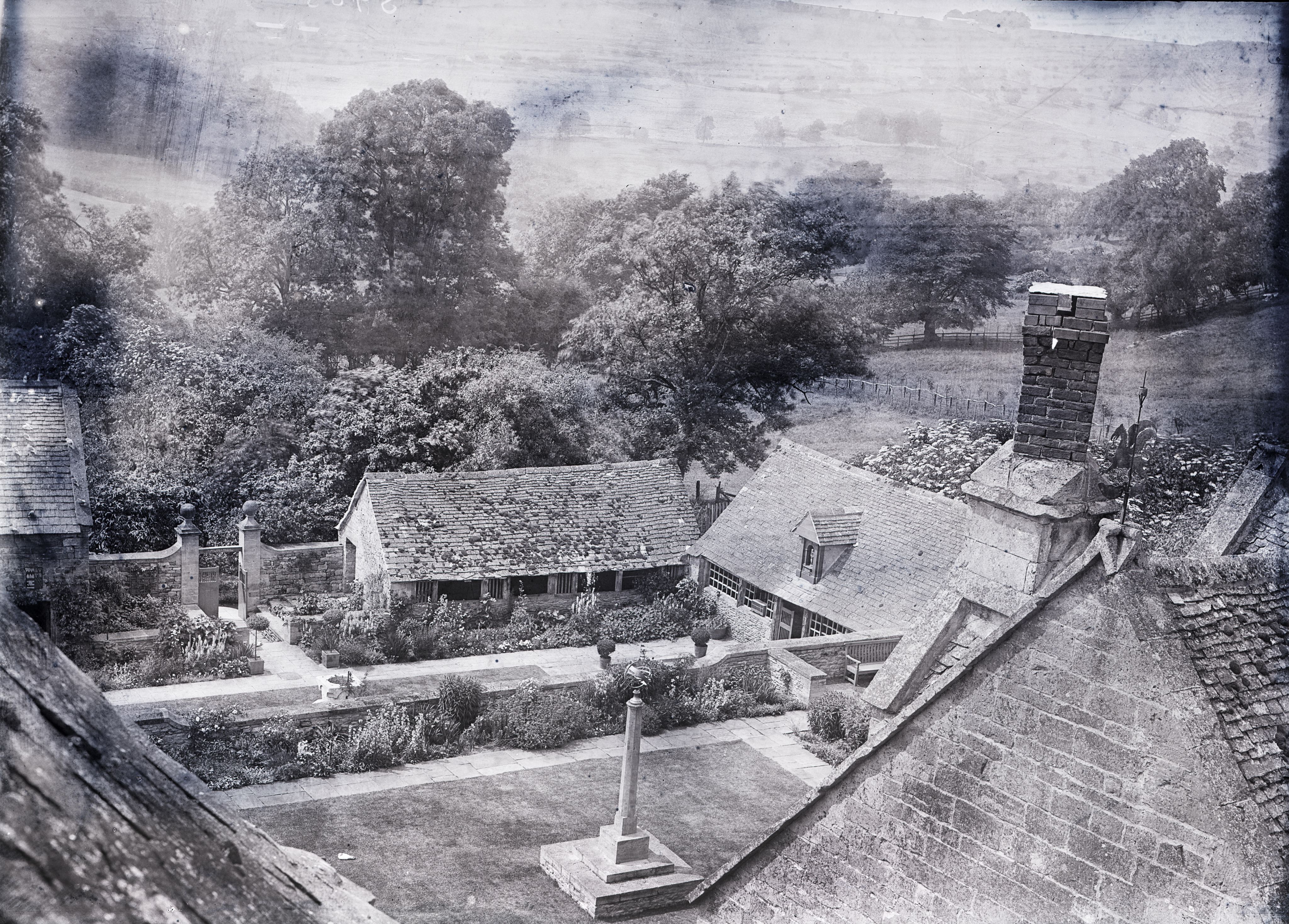
Glass photographic negative plate. Depicting the Garden from the Attic Window (Hundred Wheels) at Snowshill Manor. Original glass plate envelope present. © National Trust / Sarah Allen.
Glass photographic negative plate. Depicting the Garden from the Attic Window (Hundred Wheels) at Snowshill Manor. Original glass plate envelope present. © National Trust / Sarah Allen.
He brought to Snowshill a model village, 'Fladbury', which he had previously designed and built, and now transformed it into a Cornish fishing village, 'Wolf's Cove', on the coast of one of his ponds. He would place a fishing fleet at anchor in the harbour for visitors.
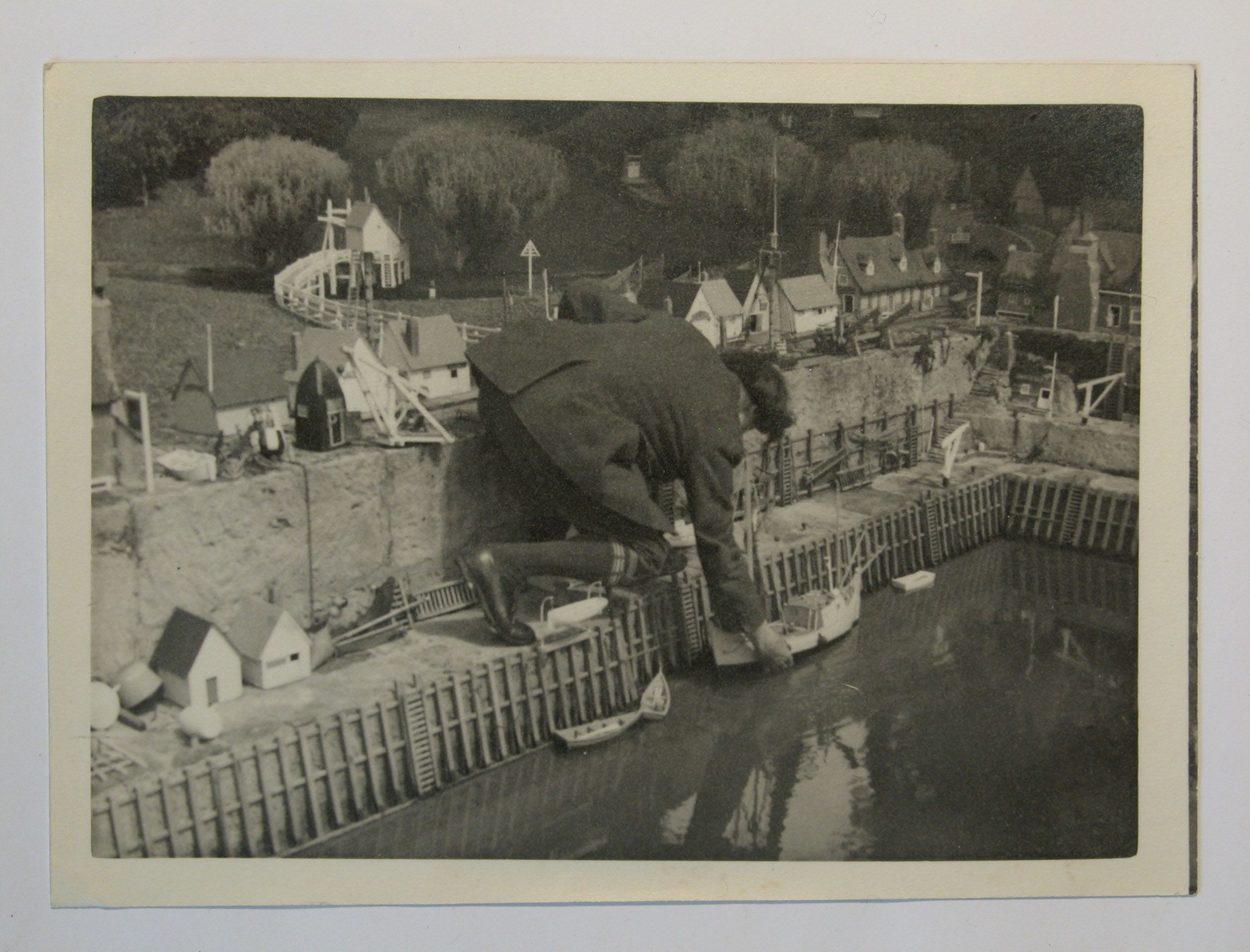
Black and white landscape photograph on plain paper with borders of part of Wolf's Cove model village in the garden of Snowshill Manor. Charles Wade is kneeling on the quayside handling a boat on the water. © National Trust Images/ Claire Reeves & team.
Black and white landscape photograph on plain paper with borders of part of Wolf's Cove model village in the garden of Snowshill Manor. Charles Wade is kneeling on the quayside handling a boat on the water. © National Trust Images/ Claire Reeves & team.
From the 1920s Charles's Snowshill Manor became an increasingly popular destination, and was visited by Virginia Woolf, Graham Greene, John Buchan, and even Her Majesty Queen Mary at 1.45pm on the 30th July 1937. Some visitors were allowed to enjoy his incredible historic costume collection.
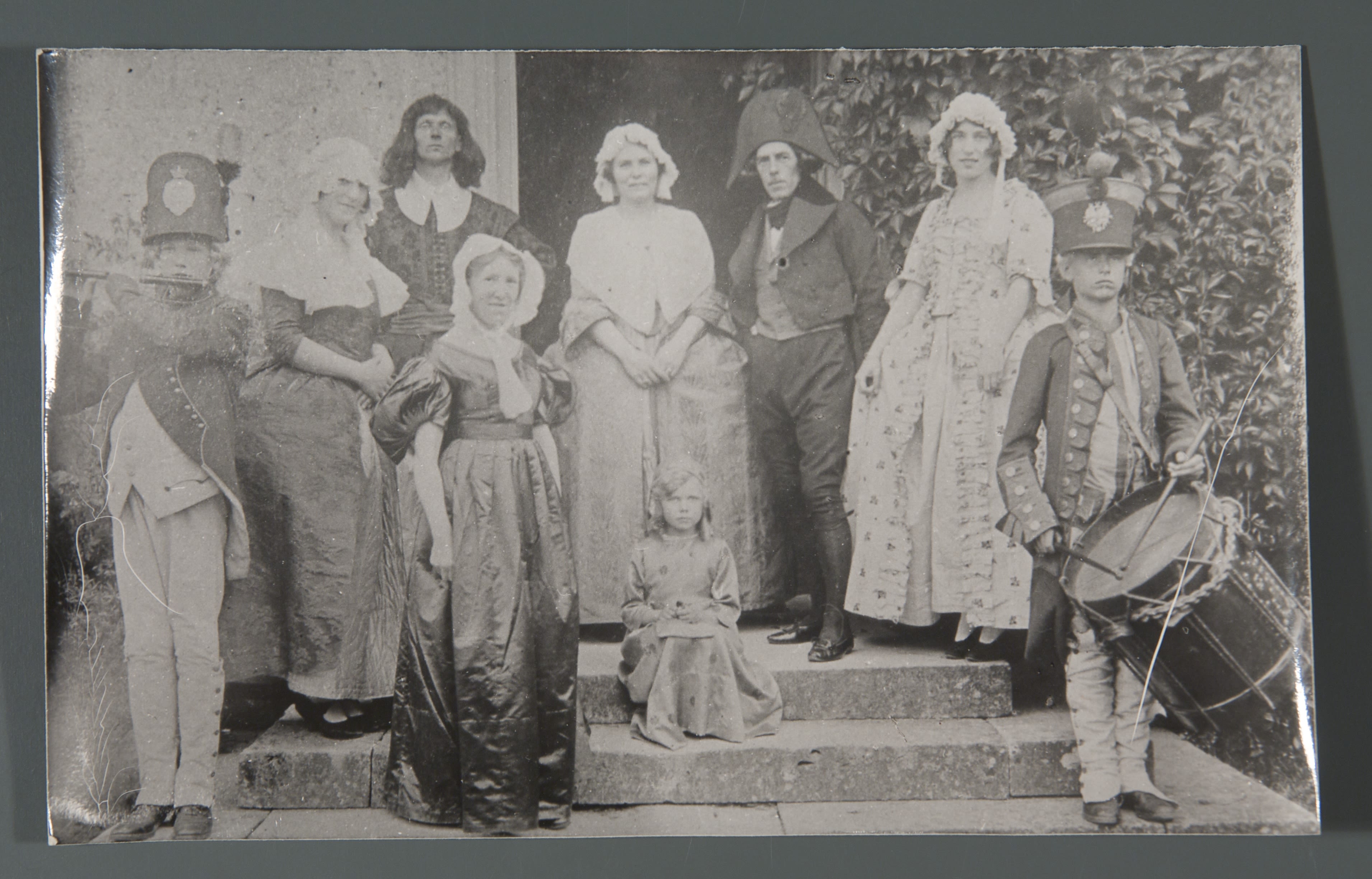
Photograph of Mr Wade, Kate Murray, Mr Battlebury (Master of Scout Camp) and party at Snowshill Manor, dressed in period costume. The following garments are being worn; Back row left to right;- Boy / Coatee / SNO.TC.1995.2 / Waistcoat 1993.2 / Breeches / 1993.3 / Hat ?2153 / Woman / Gown SNO.TC.38 / Man / Jacket SNO.TC.1972 / Woman / Gown /SNO.TC.1 / Wr Wade / Hat ?SNO.TC.1234 / Coat ?688 / Waistcoat and Breeches not identified. / Woman / Gown SNO.TC.8 / Boy / Shako SNO.TC.2156 / Coat 1994.1 / Waistcoat /1994.2 / Woman in Front Gown SNO.TC.447 / Child / Dress and hat SNO.TC.2197. © National Trust / Simon Harris
Photograph of Mr Wade, Kate Murray, Mr Battlebury (Master of Scout Camp) and party at Snowshill Manor, dressed in period costume. The following garments are being worn; Back row left to right;- Boy / Coatee / SNO.TC.1995.2 / Waistcoat 1993.2 / Breeches / 1993.3 / Hat ?2153 / Woman / Gown SNO.TC.38 / Man / Jacket SNO.TC.1972 / Woman / Gown /SNO.TC.1 / Wr Wade / Hat ?SNO.TC.1234 / Coat ?688 / Waistcoat and Breeches not identified. / Woman / Gown SNO.TC.8 / Boy / Shako SNO.TC.2156 / Coat 1994.1 / Waistcoat /1994.2 / Woman in Front Gown SNO.TC.447 / Child / Dress and hat SNO.TC.2197. © National Trust / Simon Harris
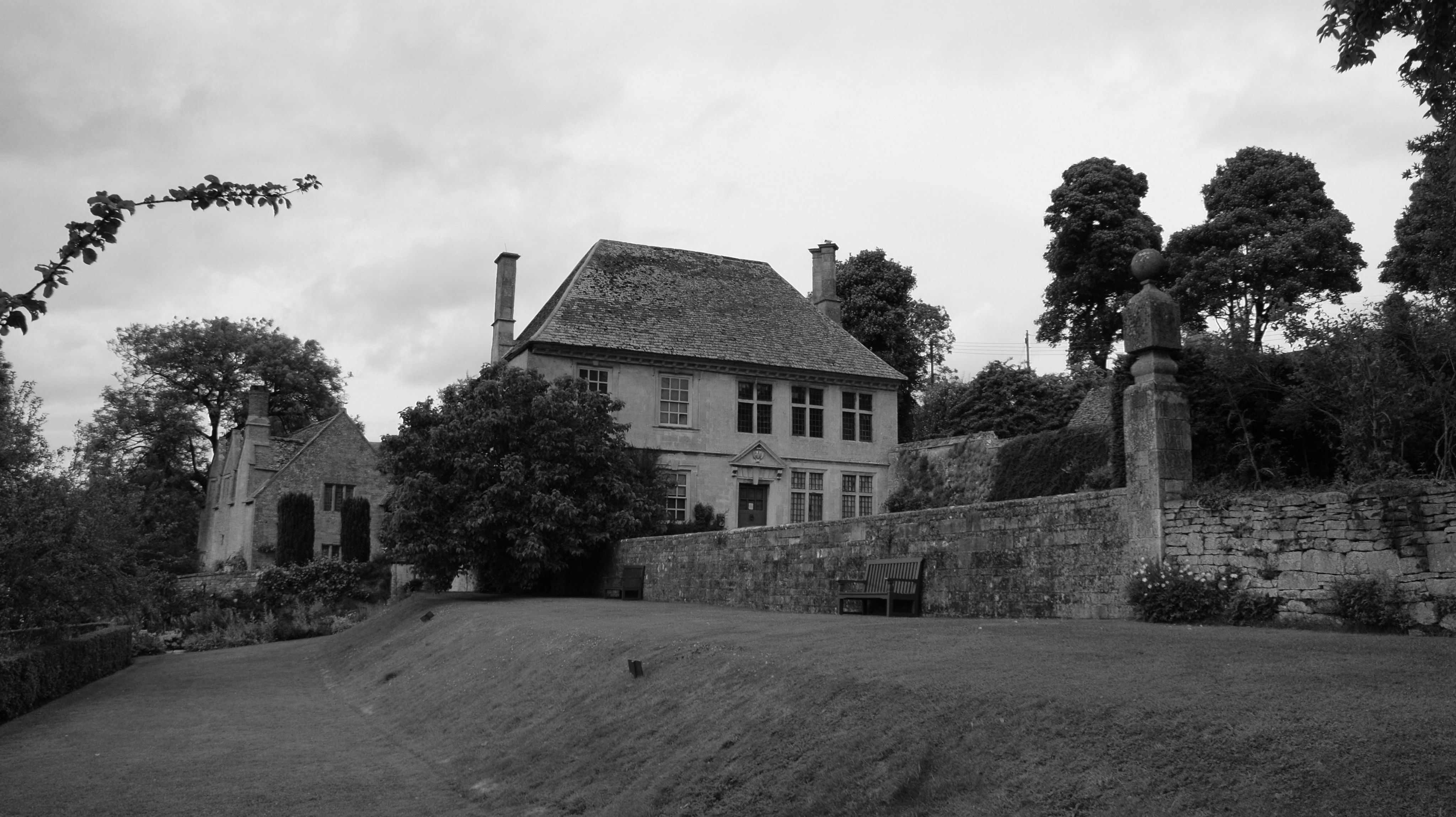
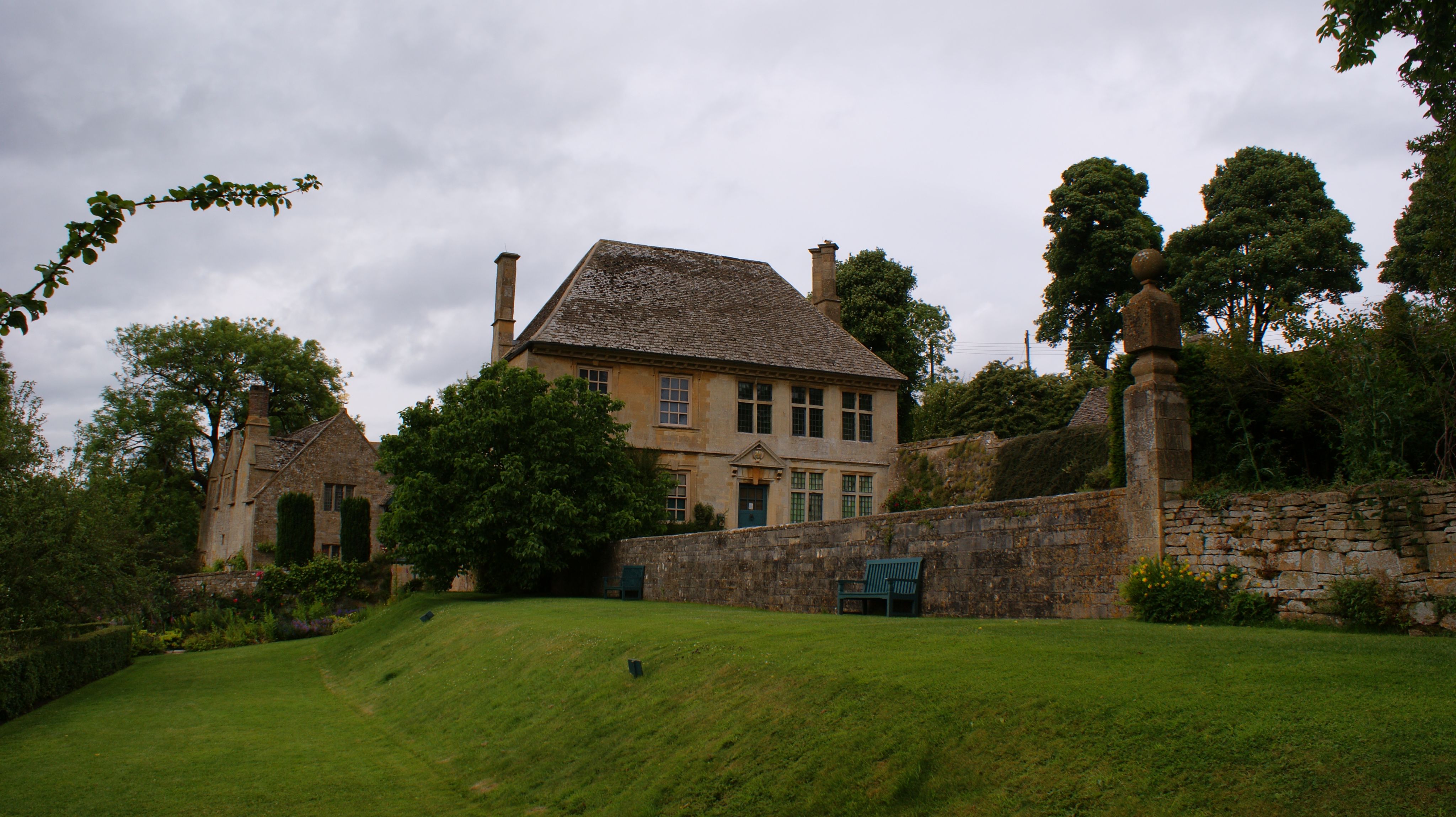
Charles continued collecting and adding to Snowshill Manor until his death in 1956.
But don't worry, you can still visit Charles Wade's Snowshill Manor. He gifted it with the collection to the National Trust, and they opened it to the public in 1952. Click below...
Remember, you can visit National Trust properties for free with your Heritage New Zealand Pouhere Taonga membership. Find out more via our website. Click below.